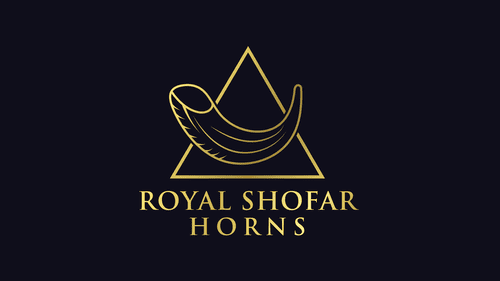מאמרים אודות שופרות
The shofar on Rosh Hashanah – tradition and history
Shofars are an integral part of the tradition of Jewish holidays, especially Rosh Hashanah. The shofar, made from the horn of an animal, usually a ram, represents spiritual communication, a signal of change, and a message for the future. In this article, we will review the importance of the shofar on Rosh Hashanah, its use, the different types of shofars, and the symbolic and historical meaning of blowing the shofar during the holiday.
The Historical Origin of the Shofar
The shofar is one of the oldest instruments in Jewish tradition, and its use is mentioned in the Bible, where it served as a tool for communication and was used in religious and state ceremonies. In the Bible, the shofar appears in many contexts: at Mount Sinai, during wars, and of course on Rosh Hashanah and Yom Kippur. During the Temple period, blowing the shofar was an integral part of the priests’ duties, used both to announce the start of the holiday and to mark important periods in the Jewish calendar.
The Meaning of the Shofar on Rosh Hashanah
On Rosh Hashanah, the shofar symbolizes a call for self-reflection and spiritual awakening. The blowing of the shofar on Rosh Hashanah is perceived as an invitation to repentance, to reflect on our actions over the past year, and to commit to self-improvement in the coming year. The shofar serves as a symbol of renewal, the renewal of the covenant between humans and God, and a call for self-examination. According to Jewish tradition, the sound of the shofar penetrates the heart and encourages a person to repent and start afresh.
Types of Shofars
There are several types of shofars, differing in their shape and origin:
- Ram’s Horn Shofar: The most common shofar, made from the horn of a ram. It recalls the Binding of Isaac, where Abraham sacrificed a ram instead of his son, symbolizing devotion and faith.
- Ibex Shofar: A long and twisted shofar made from the horn of an ibex. It is less common, but some use it due to its unique shape.
- Kudu Shofar: A long and impressive shofar made from the horn of an African kudu. It is very striking but not always kosher for use according to Jewish law.
The Process of Blowing the Shofar
Blowing the shofar on Rosh Hashanah involves a variety of sounds consisting of three main types:
- Tekiah: One long sound.
- Shevarim: Three short sounds.
- Teruah: A series of nine very short sounds.
The order of the blasts, known as “Tekiot De-Meyushav” and “Tekiot De-Ma’amad,” varies according to tradition, and typically includes 100 sounds during the Musaf prayer of Rosh Hashanah. Each sound has a different symbolic meaning, and together they reflect the full range of emotions and intentions of the Jewish people during the sacred moment of Rosh Hashanah.
The Shofar as a Symbol of Change and Renewal
Beyond its technical use, the shofar holds many symbolic meanings. On Rosh Hashanah, the shofar symbolizes a call for change, renewal, and a new beginning. It serves as a tool to convey a message of unity and hope for a better future. The sound of the shofar reminds us of the covenant between God and the people of Israel and symbolizes our willingness to repent, commit to self-correction, and build a better future for ourselves and society.
The Spiritual Message of the Shofar
The central message of the shofar is renewing our connection with the Creator and with ourselves. The sound of the shofar penetrates deep into the soul and reminds us of our role in this world – to return to our roots, be aware of our sins, and seek forgiveness and atonement. According to tradition, the sound of the shofar confuses Satan, protects us from him, and ensures a good and blessed year.
Blowing the Shofar in Different Communities
Every community has different customs regarding how the shofar is blown. Some start the blasts immediately after the Torah reading, while others perform the blasts only at the end of the Musaf prayer. There are also different customs regarding the length and order of the blasts, depending on community traditions and local customs.
Conclusion
The shofar on Rosh Hashanah is a powerful symbol of a call for change, self-reflection, and hope for a better future. The use of the shofar is an inseparable part of the celebrations and religious ceremonies, symbolizing our connection to heritage, faith, and the deep meaning of the holiday. Whether we listen to the sound of the shofar in the synagogue or blow it ourselves, it is important to remember the message it carries: renewal, awakening, and hope for a good and sweet year.


 עברית
עברית

מגוון שופרות מהודרות לרכישה מהירה
Yemenite Kudu Shofar – Strictly Kosher, 60-70 cm
Yemenite Kudu Shofar – Strictly Kosher, 40-50 cm
deer shofar – size 30-35 cm
Yemenite Kudu Shofar – Strictly Kosher, 120+ cm
deer shofar – size 40-45 cm
Yemenite Kudu Shofar – Strictly Kosher, 80-90 cm
Shofar Oreix (Shofar Ram)
deer shofar – size 25-30 cm
Yemenite Kudu Shofar – Strictly Kosher, 110-120 cm
deer shofar – size 55-60 cm
deer shofar – size 35-40 cm
Yemenite Kudu Shofar – Strictly Kosher, 90-100 cm
Yemenite Kudu Shofar – Strictly Kosher, 70-80 cm
Yemenite Kudu Shofar – Strictly Kosher, 100-110 cm
deer shofar – size 50-55 cm
Yemenite Kudu Shofar – Strictly Kosher, 50-60 cm